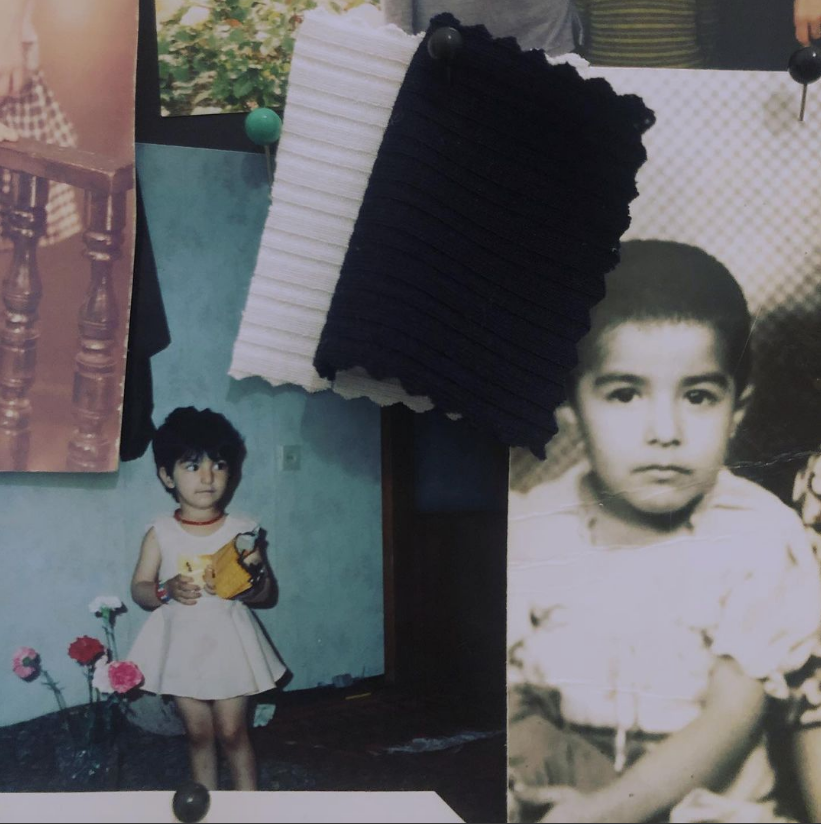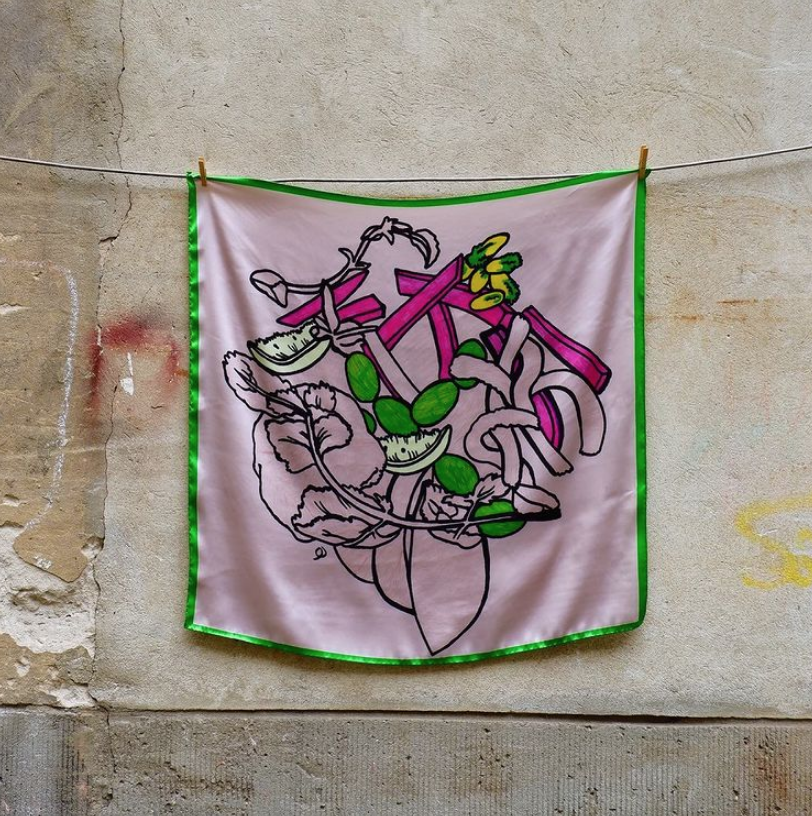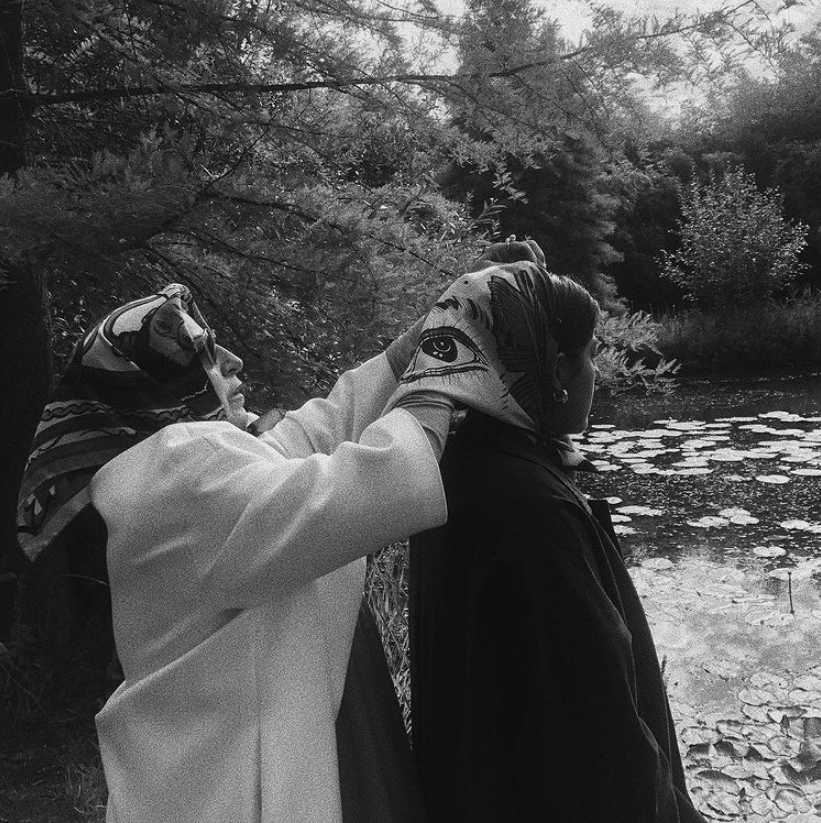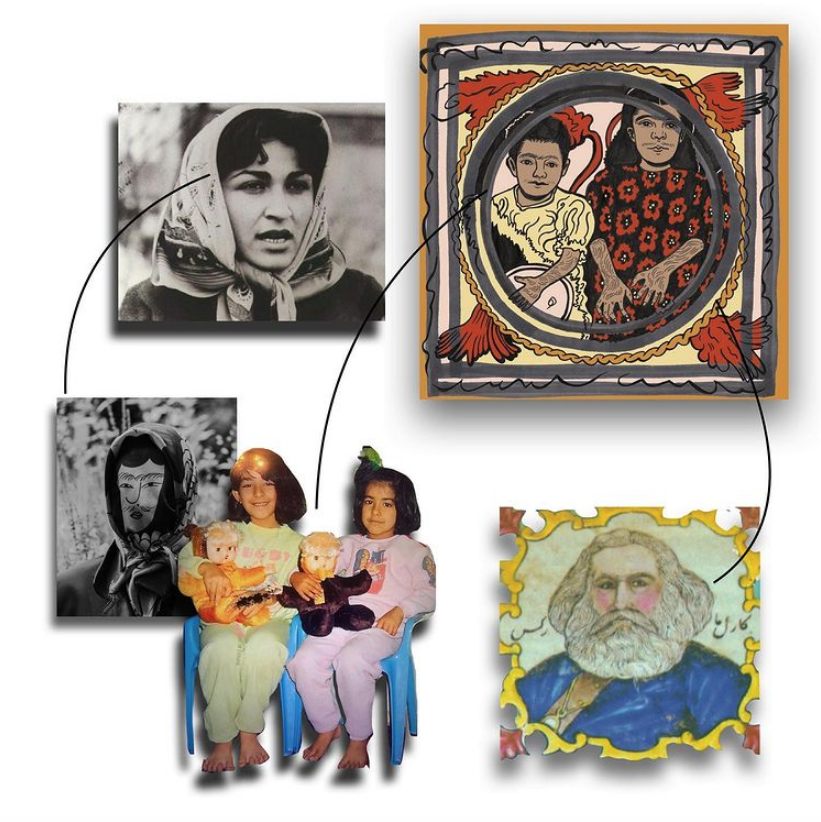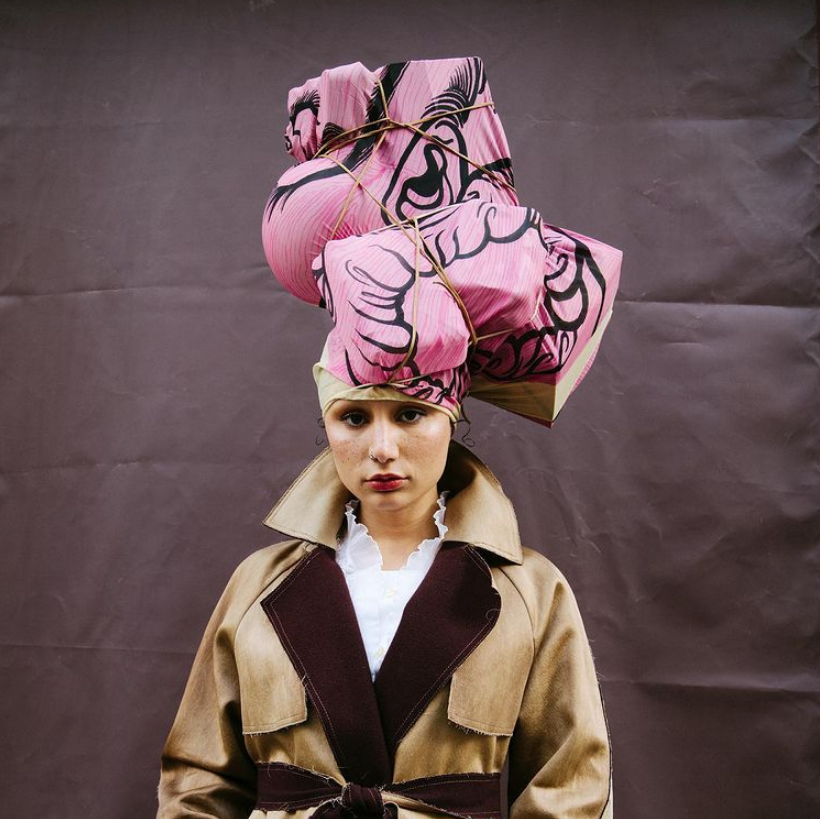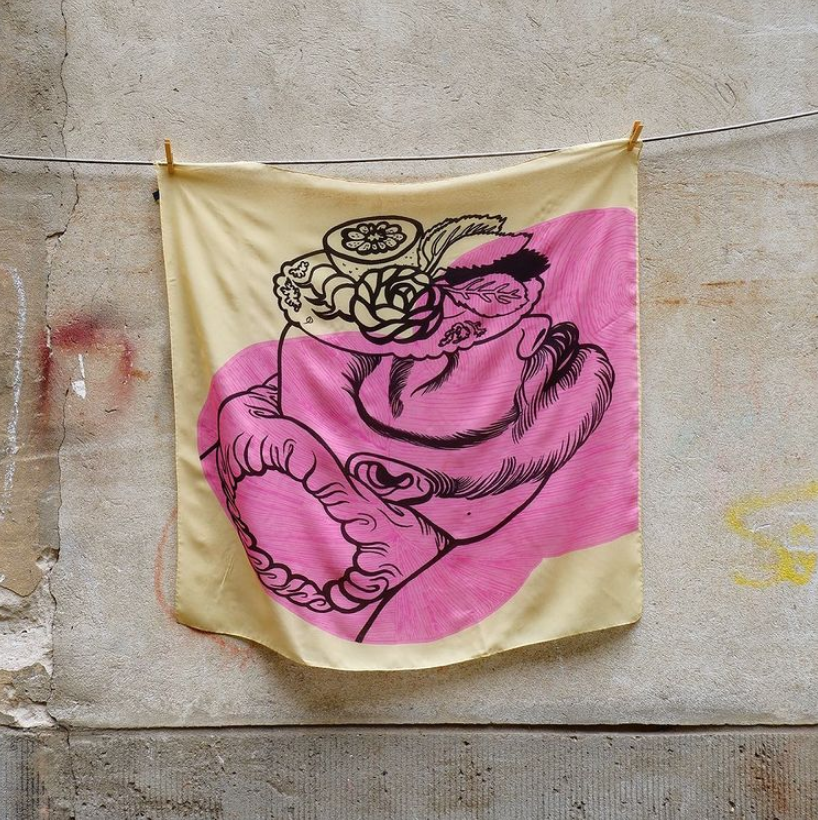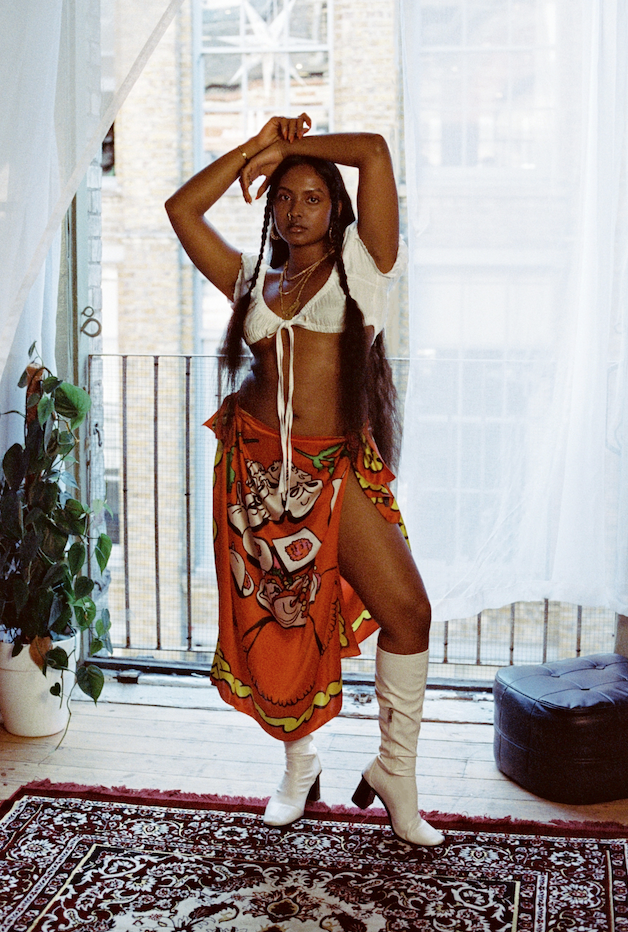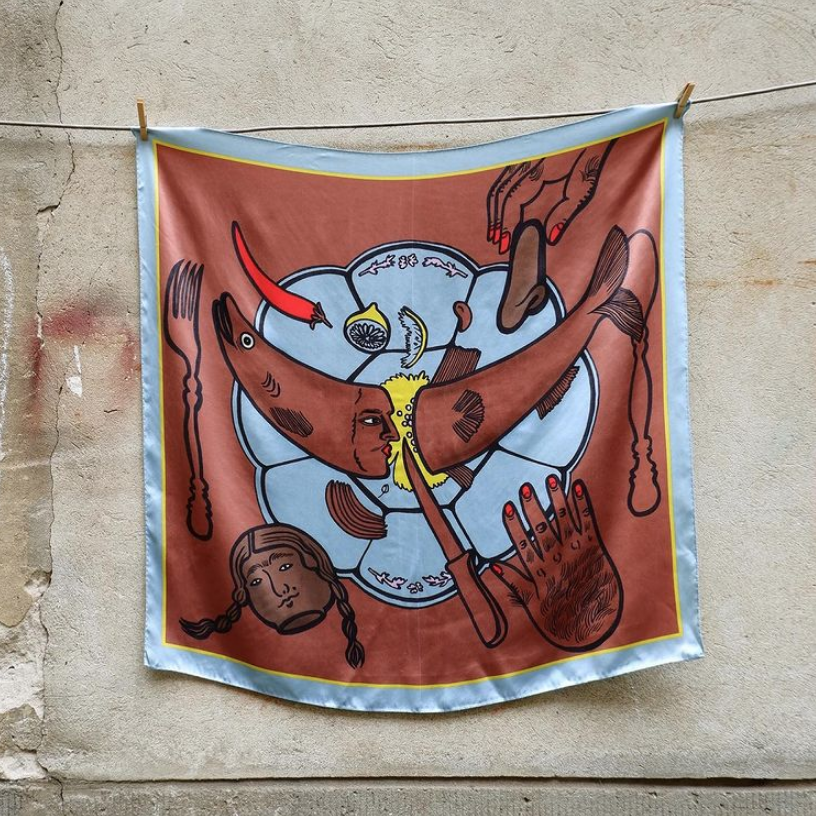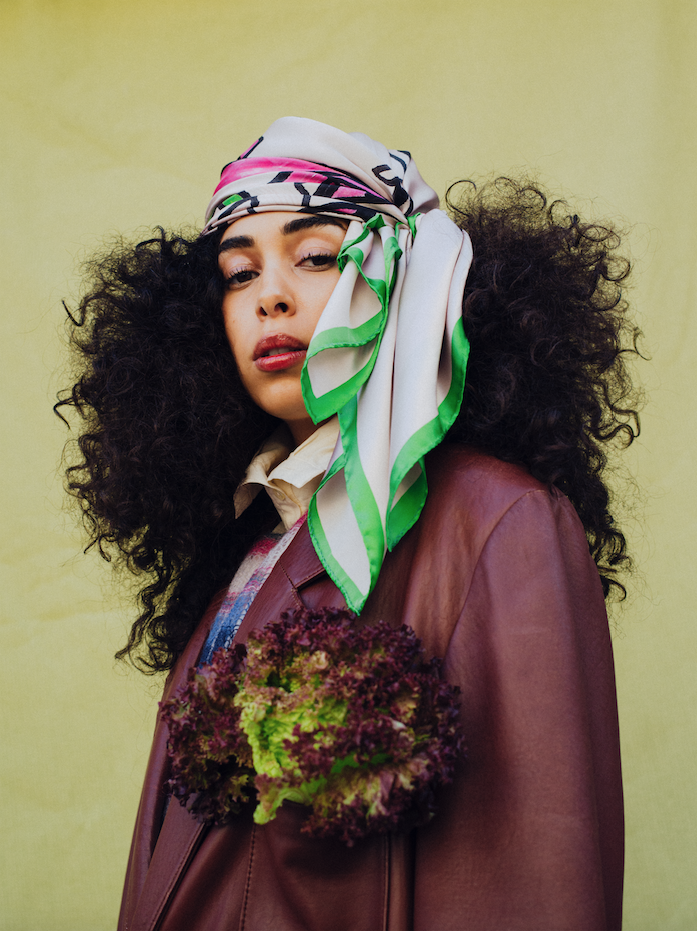Studio Hilal – “We are two sisters and Hilal is our last name”
Image by Sima Dehgani
Words by Jameela Elfaki + Zuhra Hilal
“We are two sisters and Hilal is our last name.”
From the outside, not much is immediately known about the background story of Studio Hilal or the women behind it, but that is exactly the intention.
Studio Hilal is a joint design project by Berlin-based Afghan sisters Zuhra and Moshtari Hilal. Both incredible, hugely respected artists independently with unique and wildly different visual identities. Zuhra being the eldest sister, studied and trained in fashion design, working with the likes of visionary Iris Van Herpen. Her work is informed by her love of embroidery and textiles and through this medium Zuhra critically investigates the female body, gender, and sexuality. One project in particular ‘An Exploration of the Nameless Anatomy’ symbolises the worth and self-empowerment of the vulva. She often uses mixed materials such as silicone, leather, silk and even her own hair to create her bold and intriguing artwork.
Moshtari’s work has a special focus on analogue drawing, although she is interdisciplinary with visual art and process-oriented work. Her body of work is widely shaped by the (self)portrait and family archive and exploring her own subjective experience. In an interview for Pocko Moshtari explained, “my academic work at university, helped me greatly to understand and reflect upon myself and my family background. On the other hand, my personal experience with racism and sexism forced me to question the basic ideas and concepts of our society, and these conflicts were the foundation of what I expressed in my art.” Moshtari aims to “create visibility, conversation and appreciation for black haired bodies, big noses and faces that are neglected by our Eurocentric standards of beauty.”
In their joint studio Hilal – which also translates into “crescent moon” – their disciplines meet and merge. Founded in the summer of 2020, the studio aims to bring together the materiality of fashion and the creative process of art. Bringing together their love for creativity through drawing, textiles and design. Together they create collaborative works that can be purchased online in the form of limited edition art prints on silk. It is completely up to the buyers to decide whether they see themselves as collectors or customers. The prints can be worn in a multitude of different ways or even framed as art. The focus is always on small and high-quality editions and the idea of limited art prints as fashion consciously stands in contrast to fast fashion and mass production.
In the autumn of 2020, the first collection of four designs was released in a one-off limited edition of 50 prints each. In the beginning of their collaborative work as a design duo, their shared childhood and the shared family archive were central. Thus, the silk scarves pick up pictorial elements from their family photographs and the first shoot even took place with their mother as the model. “Since our designs were inspired by our childhood family photography, we asked our muse and mother to be a part of the shoot.” The motifs on the scarves were reinterpretations of the images the artists grew up with, borrowed from their shared childhood memories.
The creative process is not only oriented towards their self-image as artists, but also the visual communication of the prints. The sisters believe the vision and expression determine the result, rather than the typical market logic. Every shoot, editorial and image of the scarves is a collaborative experience. The theme of the Spring 2021 collection revolves around the experience of being invited to a Mehmooni, or hosting one yourself. One might remember the sight of a plate served by the lovely host, another the shared moments preparing filled dumplings while chatting along. Mehmooni is a Farsi term for intimate and celebratory gatherings with family or friends.
Studio Hilal invites us all to their special Mehmooni, sharing their wonderful art with us and the magic is, It’s up to you how you choose to see it or wear it.
You can find Zuhra and Moshtari’s prints here: and follow the studio here.

